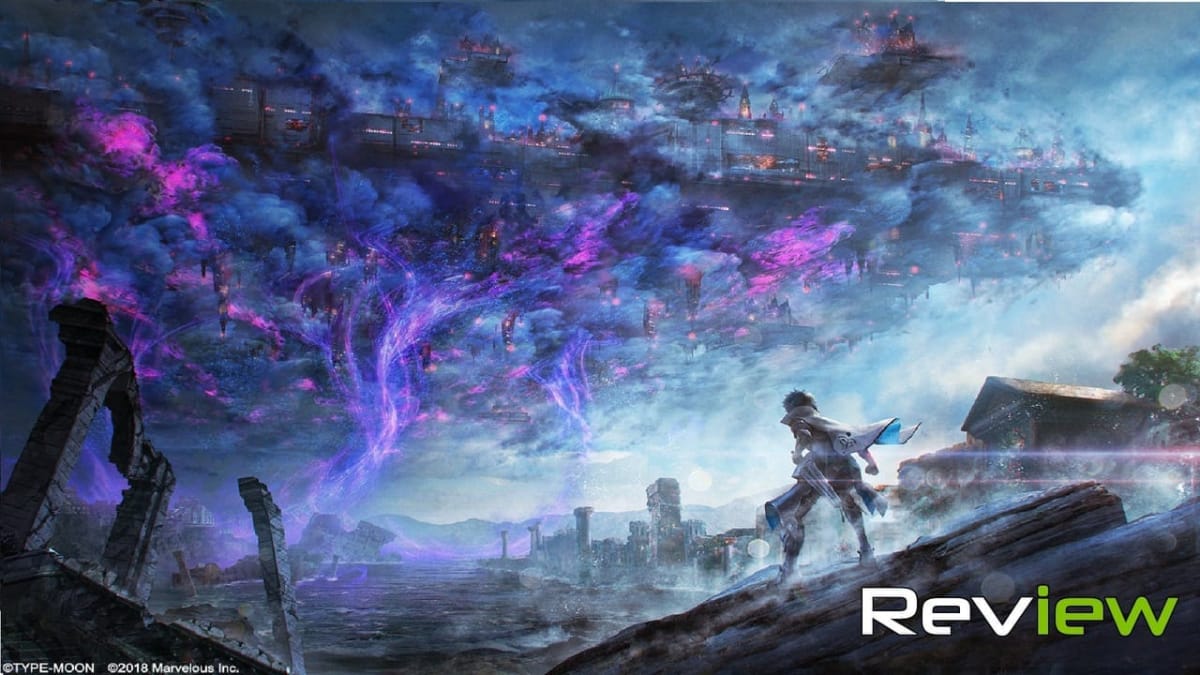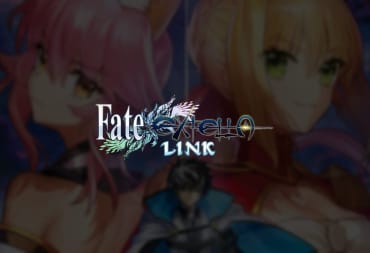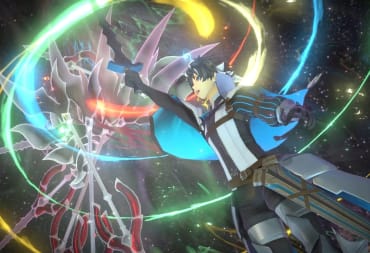Fate/Stay Night is a series with humble roots, beginning as a visual novel in 2004. Since then, the series has produced myriad spin-offs that have explored the setting in a variety of ways and helped series grow into a huge franchise. However, the spin-off that made the biggest impact might just be Fate/Extra. First released on the PSP in 2010 in Japan, Fate/Extra was a hybrid RPG/visual novel that took the Holy Grail War that defined its progenitor into a cyberpunk setting. Fate/Extella Link picks up right where the original left off, with Hakuno once again confronted by a looming war from within the Moon Cell.
This story comes through a series of cutscenes that use detailed character sprites and voice over. Between these scenes is the meat of the game, where you battle against robot-like beings and servants drawn from across the Fate/ universe. These battles play out in a hack-and-slash style that sees a single character defeating legions of foes. It's firmly in the Musou category, similar to Koei Tecmo's Dynasty Warriors.
The tremendously fast flow of the gameplay moves everything forward at a fun pace. Unfortunately, this fun often comes to a grinding halt, mostly in the form of missions involving unusual objectives. Instead of fighting, you might need to find a hidden object or participate in a one on one boss fight. Both of these events stall the rhythm of battle. Bosses soak up far too many hits, and looking for invisible foes that only appear once you're on top of them is no fun. On top of this, bosses don't flinch or stop movement when attacked, making it feel like your strikes have no weight to them. Boss fights are just something of a chore, though not enough of one that it burdens the otherwise excellent gameplay.

Between these battles, you spend a bit of time at the home base. Here, you can talk Servants, choose a playable character and support options, create items and equipment, and choose a stage upon which to embark. This improves on the first game, where missions lived in a menu that lacked Fate/Extra's distinct cyberpunk flavor. The ability to directly interact with playable servants brings some much-needed flavor to the time between missions. Seeing your Servants sitting, lazing about, and interacting with each other reinforces their nature as characters and helps the player connect with them.
However, as neat as the home base is, it's also something of a skinned series of menus. You can even still access every part of it through a menu. This seems like a strange choice given how the base is the center of your struggle in the lore. This leads to a bit of a disconnect and I eventually gave up on running around and talking to characters. Bringing up the pause screen accomplishes everything much more quickly. If we ever get a third Extella game, an expanded base worth exploring for more then a few moments would be great.
Once on the battlefield, players find themselves in the middle of a map separated into sectors. Hundreds of fodder enemies fill each sector alongside up to five tougher figures known as Aggressors. By defeating all Aggressors in the area, the player will take over the sector and move the stage forward. Generally, you win a stage by either overtaking every sector or defeating a boss.

These stages go by quickly, with even longer battles lasting twenty minutes at most. Sadly, these are also home to a lingering sense of sameness. Despite the skin on each stage, and the variants of each with differing numbers of sectors, there really are just five different kinds of enemies. Three small foes, three large variants, and a plant creature which summons the former. These creatures are on every stage and never change save for how much health they have. While cutting through these monsters is fast and effortless, some variants based on stages or themed around the Servant who rules over the map would have been much appreciated. As things stand, it isn't much fun to see the same faces across every single mission.
In total, you'll go through almost thirty storyline battles as you follow a branching flowchart. This eventually leads to one of three endings, one of which requires beating all available battles up to that point, where the game reaches its conclusion and everything wraps up. For those familiar with the first Fate/Extella, you may notice a big difference in structure. Whereas the original divided its plot into three routes, one for each of the main heroines, Extella Link instead tells one continuous story.
In many ways, Extella Link's plot has better writing and more consistent characters than its predecessor. The plot beings with a central idea and follow it through to the end. However, in doing so it fails to capture the spirit that makes the Fate/ series story so great in the first place. That being the sheer craziness of it all, the absurdity of a universe where characters like King Arthur battle it out with Alexander the Great and Gilgamesh, is missing from this game entirely. Thus by focusing on telling a single unified narrative, it loses the spirit of the franchise and becomes worse for it.

So with the plot being a bit weak, how does the rest of the game hold up? Quite well, honestly. When dropped into a stage, fighting your way through hundreds of goons feels just as good as it did in the first game. Just like before, you have access to two melee attacks, one light, and one heavy. These attacks feel satisfying to use and give just enough feedback in the form of enemy recoil to lend some weight to battle. Taking out thousands of enemy units feels nearly effortless and there is never a moment in which you feel outclassed or forced into a cheap position. The sole exception to this is perhaps early on when your characters are underleveled and have little health. At this point, ranged enemies can stun the player and force a cheap death or two.
The biggest change to battle comes in the form of active abilities, which take the form of attacks used by the character in series lore. These attacks redefine combat to the point you'd wonder what you ever did without them. Being able to pop off powerful area-of-effect and rush attacks that also sweep away seas of enemies make things play much smoother. With six skills per character, and the ability to power them up through level ups, there is even a degree of customization that dwarfs that in the first game.
In all, active skills are one of the best changes in Extella Link. They serve to balance certain less than useful characters from the first game (such as Iskandar or Jeanne d'Arc) who had slow attacks or slow run speed. With active abilities, they can play crowd control without having to be overly mobile.

In addition to the sixteen characters found in the original Extella, 11 new Servants join the fray for the sequel. These new characters come from a variety of Fate spin-offs. You've got Francis Drake and Robin Hood from Fate/Extra, Astolfo from Fate/Apocrypha, Darius III, Arjuna, and Scathach from Fate/Grand Order, and Lancelot and Gilles de Rais from Fate/Zero all joining the cast. Alongside these veterans are two new servants, Charlemagne and the mysterious villain Rex Magnus. Each of these new characters serves as a fairly good cross-section of Fate as a whole and play excellently. However, some of it is a waste since you can’t actually use most of them in battle until the story mode is complete.
This means that you spend most of your time with the main cast your first time through. This feels like a letdown, especially if you love one of the Servants relegated to the post-game. You can play through several dozen extra missions after the campaign is over. Still, without a real role in the story, it's sad seeing these characters relegated to the sideline for plot reasons. This is doubly so in that the side missions for characters from the first game simply don't show up here. It leaves many servants without any real reason to exist beyond being another body for the player to throw at enemies.
Overall, Fate/Extella Link is a solid Musou that channels the best of the genre and coats it with a bucket of fresh Fate/ themed paint. The battles are exciting, and changes to them make things flow better and feel more satisfying overall. While That being said, it is a bit lacking in the story department, and it could stand to focus more on other characters rather than giving the entire plot to Charlemagne and the main villain. For all the missteps the story makes, the gameplay picks up the slack, making for a solid, fun time overall.
TechRaptor reviewed Fate/Extella Link on PlayStation 4 with a copy provided by the publisher. The game is also available on Nintendo Switch and PlayStation Vita.
Review Summary
While more playable and mechanically sound than the original Fate/Extella, Fate/Extella Link fails to tell an engaging and memorable story, thus falling short of the standards set by other spin-offs.
(Review Policy)Pros
- Much Improved Battle Flow
- Great Character Roster
- Active Skills Bring Change
- Top Notch Presentation
Cons
- Limited Use New Characters
- Less Interesting Story
- Lacking Narrative Focus
Have a tip, or want to point out something we missed? Leave a Comment or e-mail us at tips@techraptor.net









